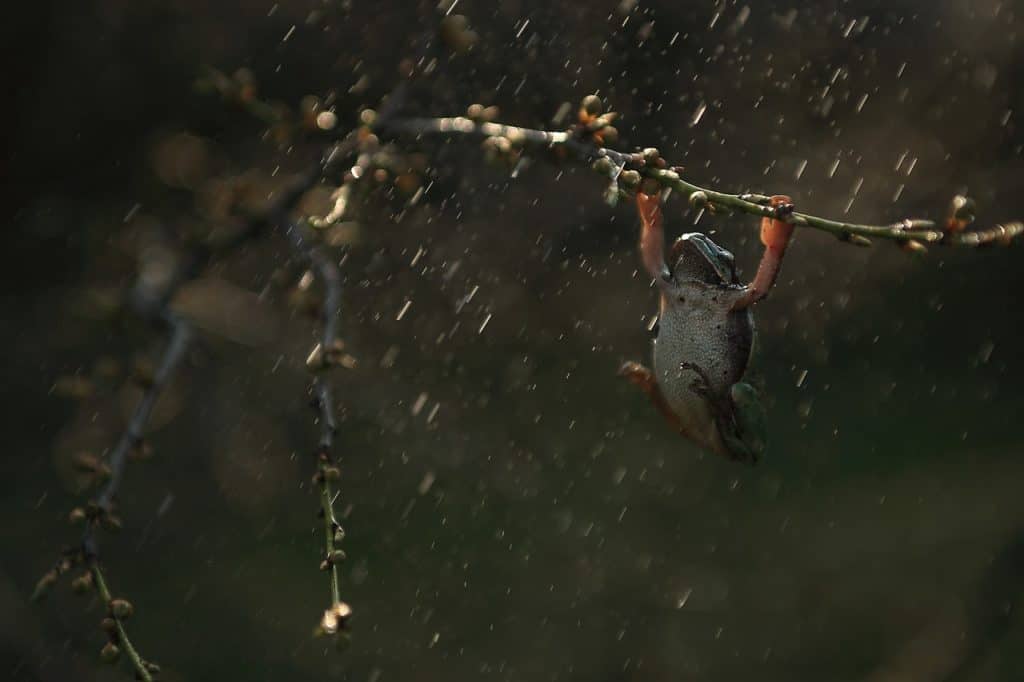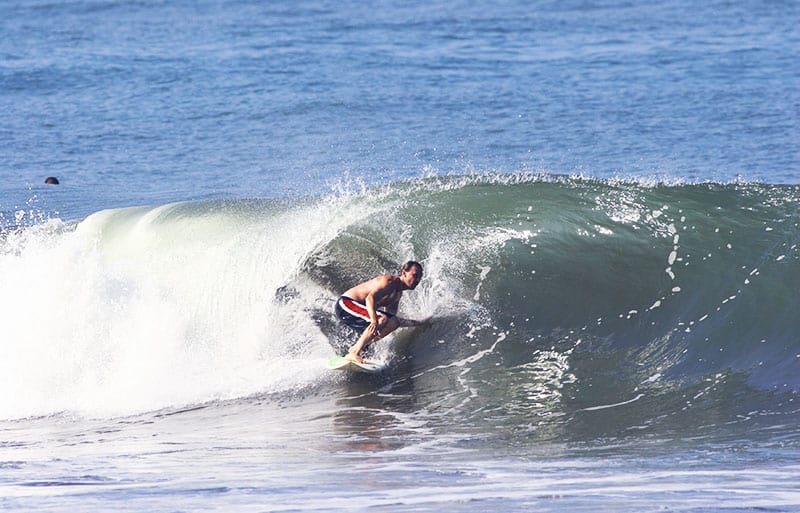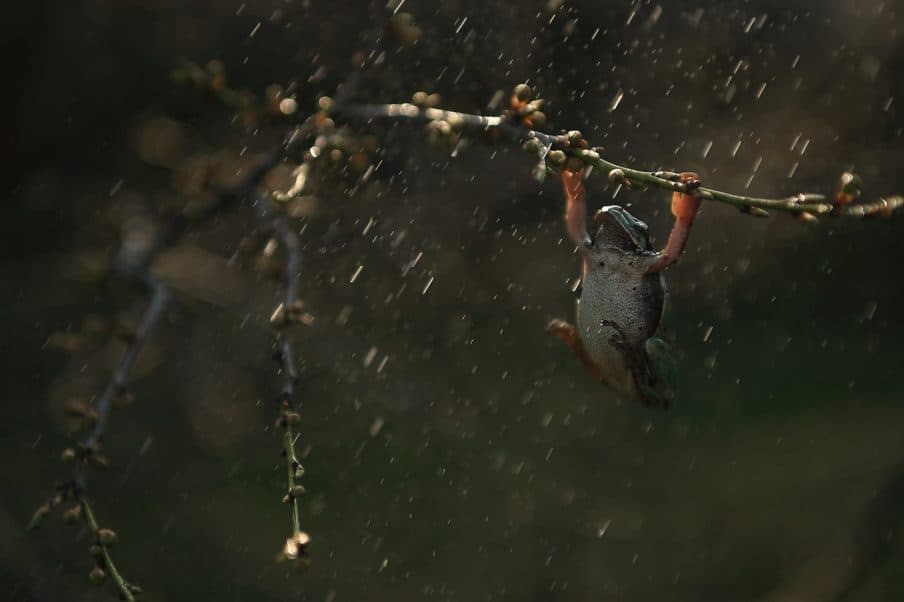
Every year from June through November, Costa Rica transforms from a sun-drenched tropical paradise into a lush, vibrant wetland. While the rainy season—often called the “green season”—brings gray skies and occasional downpours, it’s far from a washout.
The rain breathes life into the forests, swells rivers, and attracts unique wildlife, making it an incredible time to explore this Central American gem. Contrary to common misconceptions, it’s not always pouring; there are plenty of dry spells and exciting activities to enjoy. With fewer crowds and lower prices, the rainy season offers a chance to experience Costa Rica authentically and affordably.
In this guide, we’ll dive into 11 fantastic things to do in Costa Rica during the rainy season. From chasing mini-summers to spotting sea turtles, riding massive waves, and soaking in hot springs, there’s something for every traveler. Let’s explore how to make the most of Costa Rica’s green season!
1. Catch the Mini-Summer (Veranillo de San Juan)
For two weeks during the rainy season, Central America enjoys a delightful break from the storms known as the veranillo de San Juan. This “little summer” often aligns with June 24, the feast day of St. John the Baptist, blending meteorological magic with cultural charm. The Pacific Coast typically feels this dry spell first, offering clearer skies and milder weather.
Take advantage of this window to hit the beaches like Tamarindo or Playa Hermosa, where you can swim or sunbathe without the usual drizzle. It’s also a great time to hike in national parks such as Manuel Antonio, where trails are less muddy, or take a boat tour in the Nicoya Gulf to spot dolphins. The mini-summer’s timing can shift, so check local weather updates to plan your adventures. Locals often celebrate with small festivals or beach gatherings, adding a festive vibe to this brief respite. If you’re lucky, you might catch a traditional dance or a pop-up food stall serving fresh ceviche—think lime-marinated fish so zesty it’ll wake up your taste buds.
Timing is everything with the veranillo. The Instituto Meteorológico Nacional (IMN) is your best friend here—its forecasts can pinpoint when the skies clear. Pair a beach day with a sunset at Playa Sámara, where the golden light hits the calm waves just right, or explore the Rincón de la Vieja volcano, where the dry spell lets you see steaming fumaroles without slogging through muck. It’s a sweet spot of sun in a season of rain, and locals swear it’s the perfect teaser of Costa Rica’s dry season vibes.
2. Snag Rainy Season Deals
The rainy season’s lower tourist traffic translates to big savings. Hotels, from boutique stays in La Fortuna to eco-lodges in Monteverde, often cut rates by 10-40%, with even steeper discounts for locals or long-term guests. Car rentals and Airbnb bookings follow suit, making it easier to explore on a budget.
Tour prices rarely drop, but smaller operators may offer deals due to fewer bookings—don’t be shy to haggle a bit! Websites like Booking.com or direct emails to local businesses can uncover hidden gems, letting you enjoy Costa Rica’s luxury for less.
Imagine scoring a treehouse stay near Arenal with a free volcano-view breakfast thrown in, or a guided night walk in Monteverde spotting glowing fungi—all because you asked. Car rental companies slash rates on 4x4s, too, which are clutch for zipping to offbeat spots like the Río Celeste waterfall, its turquoise glow even more striking against rainy-season greens.
Flexibility is your ace here. Midweek bookings in June or November often snag the best rates—think a swanky Pacific coast resort for half price. One traveler I know landed a week in a Jacó beachfront condo for the cost of a weekend in peak season, with a surf lesson tossed in. It’s all about timing and a little charm—chat up the staff, and you might unlock perks that make your trip feel like VIP on a budget.
3. Witness Sea Turtle Nesting

The rainy season is peak time for sea turtle nesting, turning Costa Rica’s beaches into nature’s stage. Three key spots host different species, each offering a unique spectacle.
- Playa Ostional (Nicoya Peninsula): From mid-June to December, Olive Ridley turtles arrive in arribadas—mass nesting events where thousands cover the beach, especially around full moons. It’s a chaotic, awe-inspiring sight. Locals say the beach looks like a moving carpet of shells, and the sound of flippers slapping sand is unforgettable.
- Las Baulas National Park (Guanacaste): Starting in October, endangered leatherback turtles, the world’s largest sea turtles at up to 2,000 pounds, nest here. You might not see hordes, but one sighting is unforgettable. Their massive tracks, like tractor marks, linger in the sand for days.
- Tortuguero (Caribbean Coast): Known as the “Land of Turtles,” this is the Western Hemisphere’s top nesting spot for green sea turtles from July to October. Night tours reveal mothers laying eggs and hatchlings dashing to the sea. The park’s canals add a bonus—spot caimans or howler monkeys between turtle watches.
Book with certified guides to keep it ethical and support conservation—places like Tortuguero’s Sea Turtle Conservancy are gold. Bring a rain poncho (nights get wet) and a red-filter flashlight to avoid spooking the turtles. The real magic? Watching hatchlings scramble to the ocean, dodging hungry crabs in a life-or-death sprint. One ranger told me about a night when a storm paused just as the eggs hatched—nature’s own dramatic timing. It’s raw, real, and a rainy-season must.
4. Dive into Underwater Adventures
Rainy season storms might cloud some waters, but certain dive sites thrive. Playas del Coco in Guanacaste is a northern hub, with the Bat Islands—an hour’s boat ride away—offering prime bull shark encounters from June to November. Visibility varies, but the thrill is worth it. Divers often spot eagle rays or giant groupers lurking in the depths, and the islands’ rugged cliffs above water are a postcard bonus.
For a bucket-list dive, head to Cocos Island, 300 miles offshore. June and July bring calmer seas and peak sightings of hammerhead sharks, manta rays, and whale sharks—sometimes in schools so dense you’ll lose count. It’s a UNESCO World Heritage site, and the 36-hour boat ride feels like a pilgrimage for underwater junkies. Not up for the trek? The Catalina Islands near Flamingo offer shallower dives with seahorses, octopuses, and technicolor reefs—perfect for newbies or a chill day underwater.
Pack a wetsuit (waters cool off) and chat with dive shops like Rich Coast Diving for real-time conditions. One diver I met raved about a Cocos trip where a whale shark photobombed her selfie—talk about a brag-worthy shot. The rainy season stirs up nutrients, too, making marine life pop. Whether you’re chasing sharks or just dipping in, it’s a whole new world down there.
5. Skip Ziplining (But Try These Instead)
Ziplining through a rainforest in the rain? Not as fun as it sounds. Wet cables, poor visibility, and soggy clothes make it a damp letdown. If it’s a must-do, hold off booking—wait for a dry day to soar with epic views. Operators like Sky Adventures in Monteverde mix in hanging bridges or trams, which handle rain better and still give you that canopy fix.
Swap the zip for these rainy-day gems:
- Hot Springs: Arenal’s Tabacón pools turn rain into a steamy bonus—the contrast of cool drops and warm water is pure bliss. The jungle glows greener, and you might snag a quieter soak with fewer folks around.
- Indoor Attractions: San José’s National Museum spills Costa Rica’s history with artifacts like ancient stone spheres, while the Gold Museum dazzles with pre-Columbian bling. The Jade Museum? World’s biggest American jade stash—perfect for a culture hit.
- Cooking Classes: In Puerto Viejo, whip up gallo pinto with a local chef. You’ll get family recipes, like a secret spice twist, and leave ready to cook Tico-style back home.
These keep you dry and dive deep into Costa Rica’s soul. A friend once ducked into a San José museum during a downpour and ended up obsessed with indigenous pottery—it’s the kind of detour that sticks with you.
6. Escape to the Caribbean Coast
While the Pacific drowns in October rain, the Caribbean coast enjoys a sunny reprieve locals call “summatime.” Puerto Viejo and Manzanillo offer laid-back beaches like Punta Uva, spiced with Afro-Caribbean culture—think reggae beats and coconut rice that’s pure comfort food. Hammocks sway between palms, and beach bars pour cold Imperials like it’s summer all over again.
Paddle Tortuguero National Park’s canals for a wilder vibe—clear October skies mean prime sloth, caiman, and toucan spotting. The Jaguar Rescue Center in Puerto Viejo lets you peek at rehabbed critters, while a cacao tour shows how chocolate goes from bean to bar (with tasty samples, naturally). The Caribbean’s mash-up of indigenous, Afro-Caribbean, and Latino flavors is a trip in itself—think roadside jerk chicken or a Bribri elder sharing cacao lore. Pack light, kick back, and let the chill wash over you.
7. Ride the Biggest Waves

Costa Rica’s rainy season delivers monster swells, luring surfers worldwide. The northern Pacific—Tamarindo, Playa Grande—sees consistent waves all season, while central and southern spots like Dominical and Pavones peak early.
- Beginners: Jacó or Nosara have surf schools with gentler breaks. Nosara’s Guiones Beach is mellow and artsy, and Jacó’s near San José for easy access.
- Pros: Witch’s Rock or Playa Negra bring the heat, and Pavones’ legendary left-hand wave stretches forever—goofy-footers’ heaven.
Cooler water and occasional rain come with the deal, but empty lineups are the payoff. Check swell forecasts and pack a rash guard. Surf shops rent boards, and hostels often bundle surf-and-stay deals. One surfer I know caught a Tamarindo wave so big he still talks about it—rain just made it wilder. Bonfires and local surf comps pop up, too, keeping the stoke alive.
8. Raft White Water Rapids
Rainy season rafting is a rush, with rivers like the Pacuare, Sarapiquí, and Reventazón swelling to Class III–V rapids. The Pacuare’s world-class run twists through jungle, past waterfalls and indigenous Cabécar sites—half-day trips from Turrialba or overnight lodge stays from San José keep it flexible.
Big water means smooth, fast rides, but stick with pros like Costa Rica Expeditions for safety. The scenery’s unreal—misty canyons, kingfishers darting, maybe a blue morpho butterfly flashing by. Post-raft, warm up with sopa negra or agua dulce—it’s soul food after the thrill. A rafter once told me the Pacuare’s roar drowned out the rain—nature’s surround sound.
9. Soak in Hot Springs
Rainy days and Costa Rica’s hot springs are a match made in heaven. Cool rain plus steamy, mineral-rich water feels like a tropical hot tub upgrade. Tabacón Hot Springs near Arenal is the star—cascading pools, rainforest vibes, and volcanic views that pop in the mist. For quieter dips, EcoTermales or Río Negro deliver seclusion and peace.
After muddy hikes or canopy tours, the springs reset you—magnesium and sulfur work out the kinks while rain adds cozy vibes. Picture soaking with pineapple from a vendor, or booking a massage at Baldi Hot Springs with its swim-up bars. Pro tip: pack a waterproof bag and aim for early morning or late afternoon when showers ease. It’s the ultimate green season chill.
10. Go Birdwatching
Birdwatching in the rainy season is next-level—over 900 species (more than North America combined!) light up Costa Rica’s wet forests. Migratory birds join locals like toucans and quetzals, and thinner crowds mean prime viewing.
- Corcovado (Osa Peninsula): Scarlet macaws blaze red, hawks rule the canopy—wild and remote.
- Monteverde Cloud Forest: Quetzal central, with emerald beauties thriving in the mist.
- La Selva (Caribbean lowlands): Trogons, motmots, maybe an umbrella bird—diversity overload.
Go early (6–9 AM), rock a rain poncho, and bring waterproof binoculars (8×42 rocks). Rain quiets the forest, so bird calls pop—hummingbirds even bathe in drizzle, per one Monteverde guide. Grab The Birds of Costa Rica or the Merlin app, and let the chase begin. What’s your dream bird?
11. Tour a Coffee Plantation
Rainy season means coffee season—plants bloom in white flowers, and tours at Café Britt (Central Valley) or Don Juan (Monteverde) show the full deal: picking, drying, roasting. Fewer visitors give you more farmer facetime, plus misty hill views that scream postcard.
Learn how rain and altitude shape flavor, pick some cherries, and sip fresh brews in a cupping session. Pair it with a stop in Sarchí for oxcart crafts or snag beans to take home. It’s warm, aromatic, and the perfect rainy-day escape. One visitor said the coffee smelled so good it beat the rain’s chill hands-down.
Final Thoughts
Costa Rica’s rainy season isn’t a bummer—it’s the country at its liveliest. Turtle nesting, epic surf, hot springs, coffee tours—it’s adventure, nature, and deals rolled into one. Embrace the drizzle, pack smart, and dive in. What’s your green season pick?

